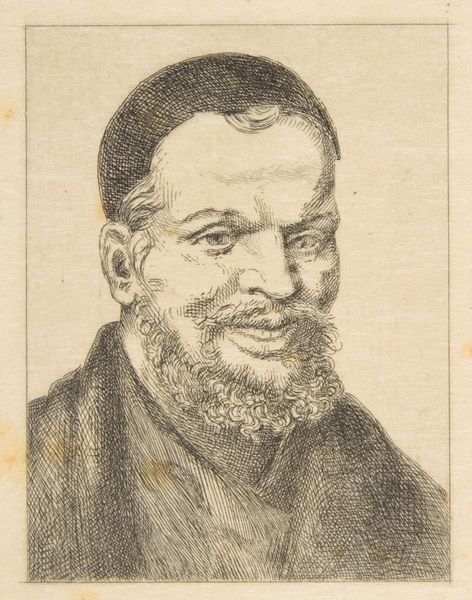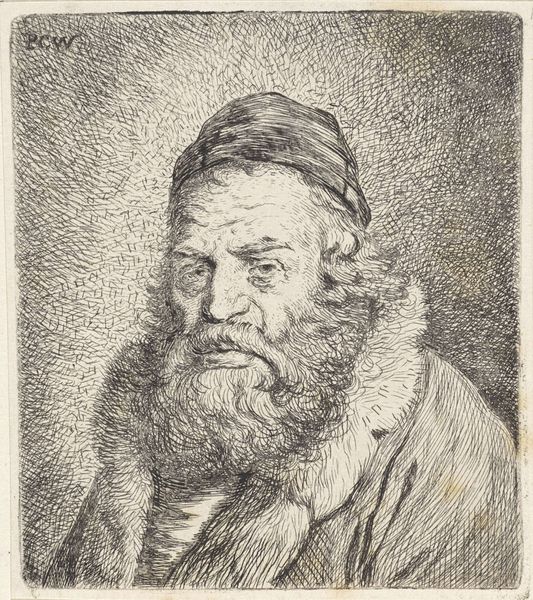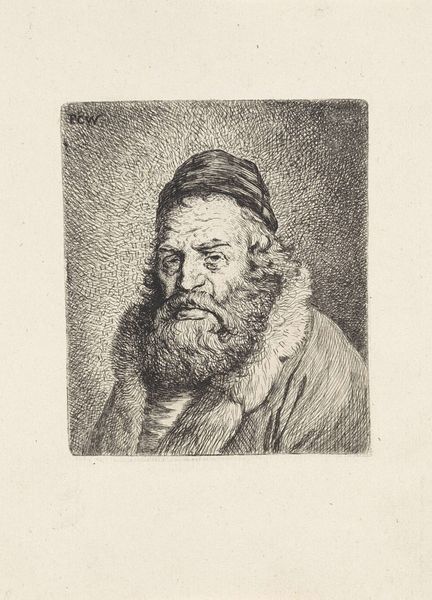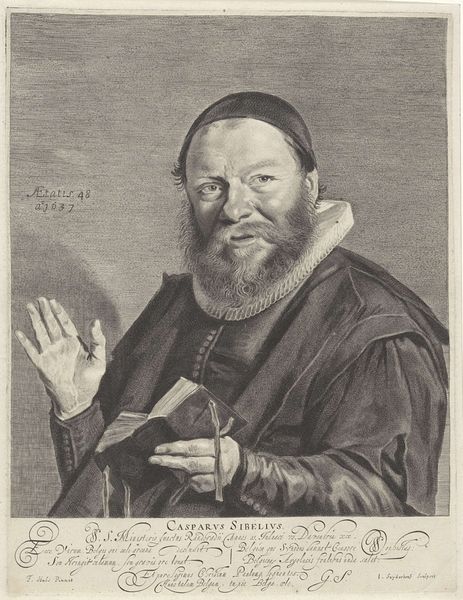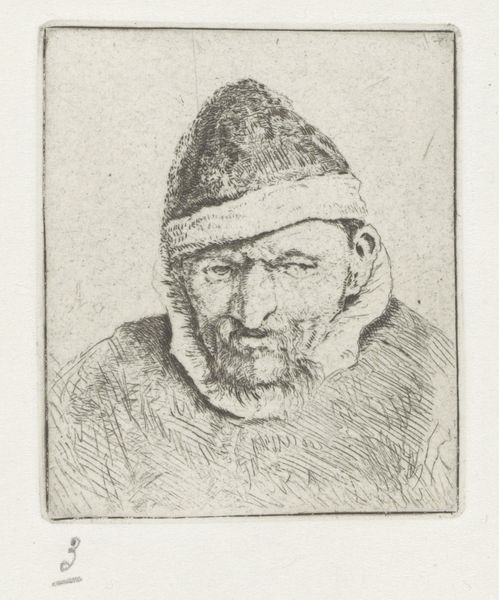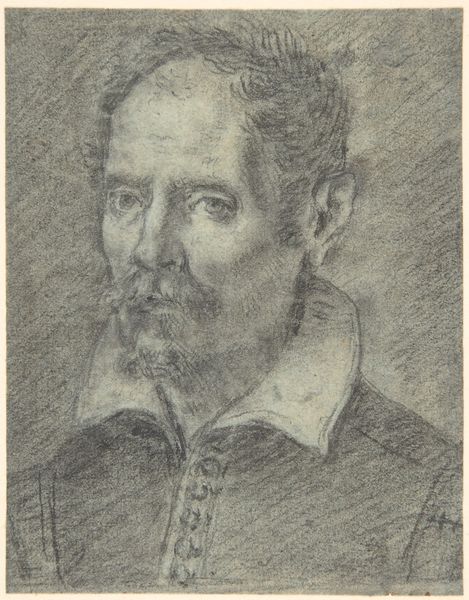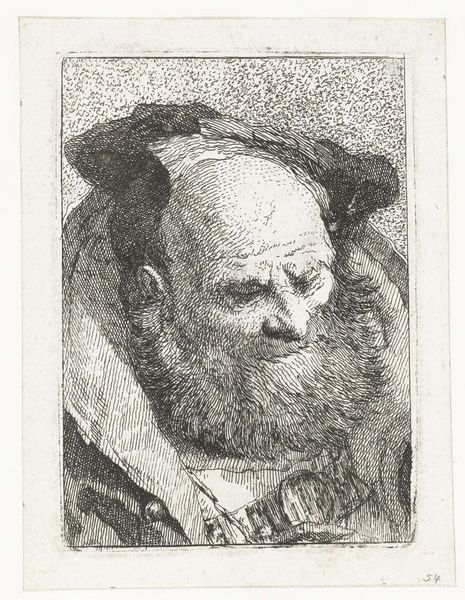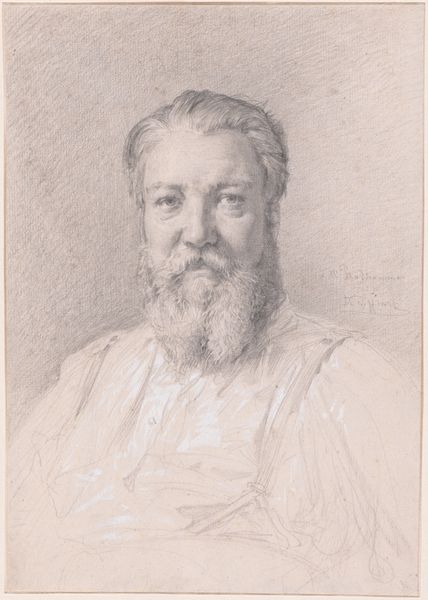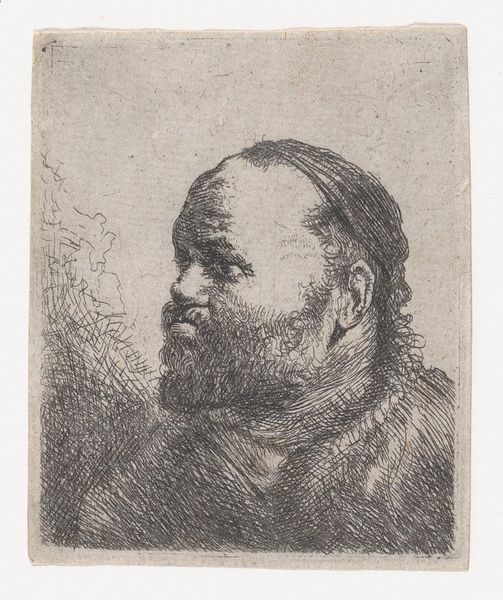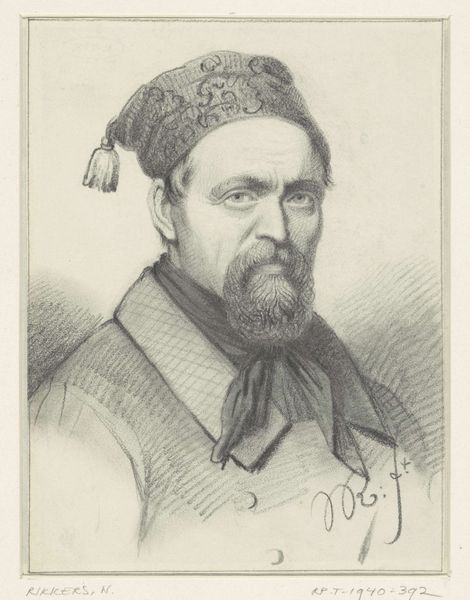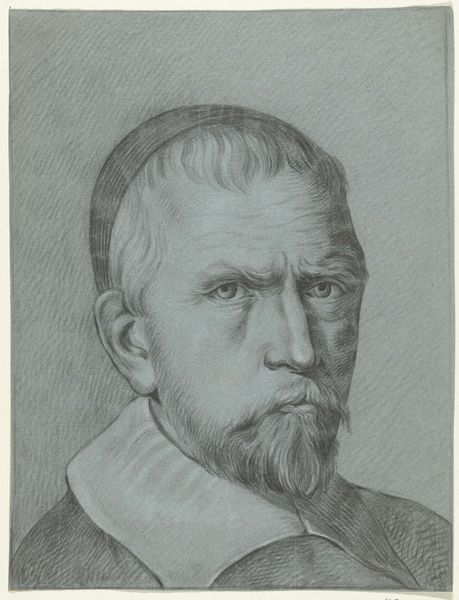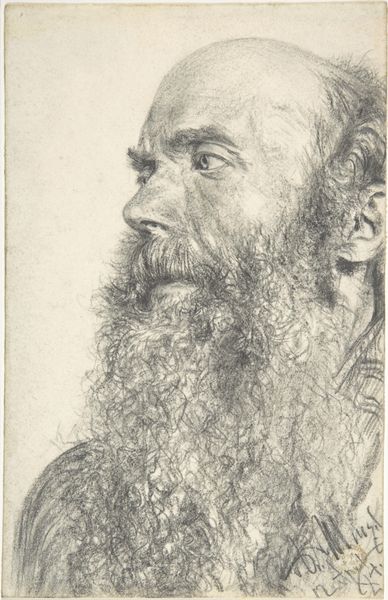
drawing, print, etching
#
portrait
#
drawing
# print
#
etching
#
realism
Dimensions: Sheet: 9 1/2 × 6 1/2 in. (24.2 × 16.5 cm) Plate: 4 1/2 × 3 1/4 in. (11.4 × 8.3 cm)
Copyright: Public Domain
Curator: At first glance, the precision of line makes me consider how portraiture and status interplay within societal frameworks. Editor: Yes, it’s Fèlix Bracquemond’s 1868 etching, titled "Portrait of Rabelais," now housed at the Metropolitan Museum of Art. Curator: It exudes a somber feel despite the small scale. Look how the minute etched lines delineate form, creating texture across the face and clothing. I’m curious, how does the print medium democratize Rabelais' image versus a painted portrait commissioned only for the elite? Editor: The very act of etching makes this image reproducible. Bracquemond employed specific techniques: line etching to carve those distinct marks. How those lines converge dictates shadows, therefore the mood shifts entirely, creating tone and depth. Each stage involved intense, laborious skill to bring the man, the materiality, and the image together. Curator: Absolutely, the democratization is potent but beyond the labor of it, let's consider Rabelais himself—the Renaissance humanist who championed challenging societal norms. Bracquemond presents him straightforwardly, but perhaps the very choice of such a subversive figure is the true statement. Do you see the hint of a smile, the wisdom in his eyes? Editor: The reproduction and circulation become subversive in their own right because they become readily available. The material itself, ink on paper, makes the portrait accessible to the wider population, and through the printing, makes it something more dynamic and capable of dissemination, no longer precious and kept from those who'd see his vision. Curator: That makes me think about accessibility and distribution extending that impact. This accessible image, though materially "simple", bears significant power through subject matter. I find Bracquemond, with his skills in the reproductive arts, aligns himself with the challenging and shifting spirit of Rabelais. Editor: I agree, his technical choices amplified Rabelais’ message, making the wisdom tangible through method. It becomes an interesting parallel between material creation and humanist philosophy that expands beyond one frame or perspective.
Comments
No comments
Be the first to comment and join the conversation on the ultimate creative platform.
